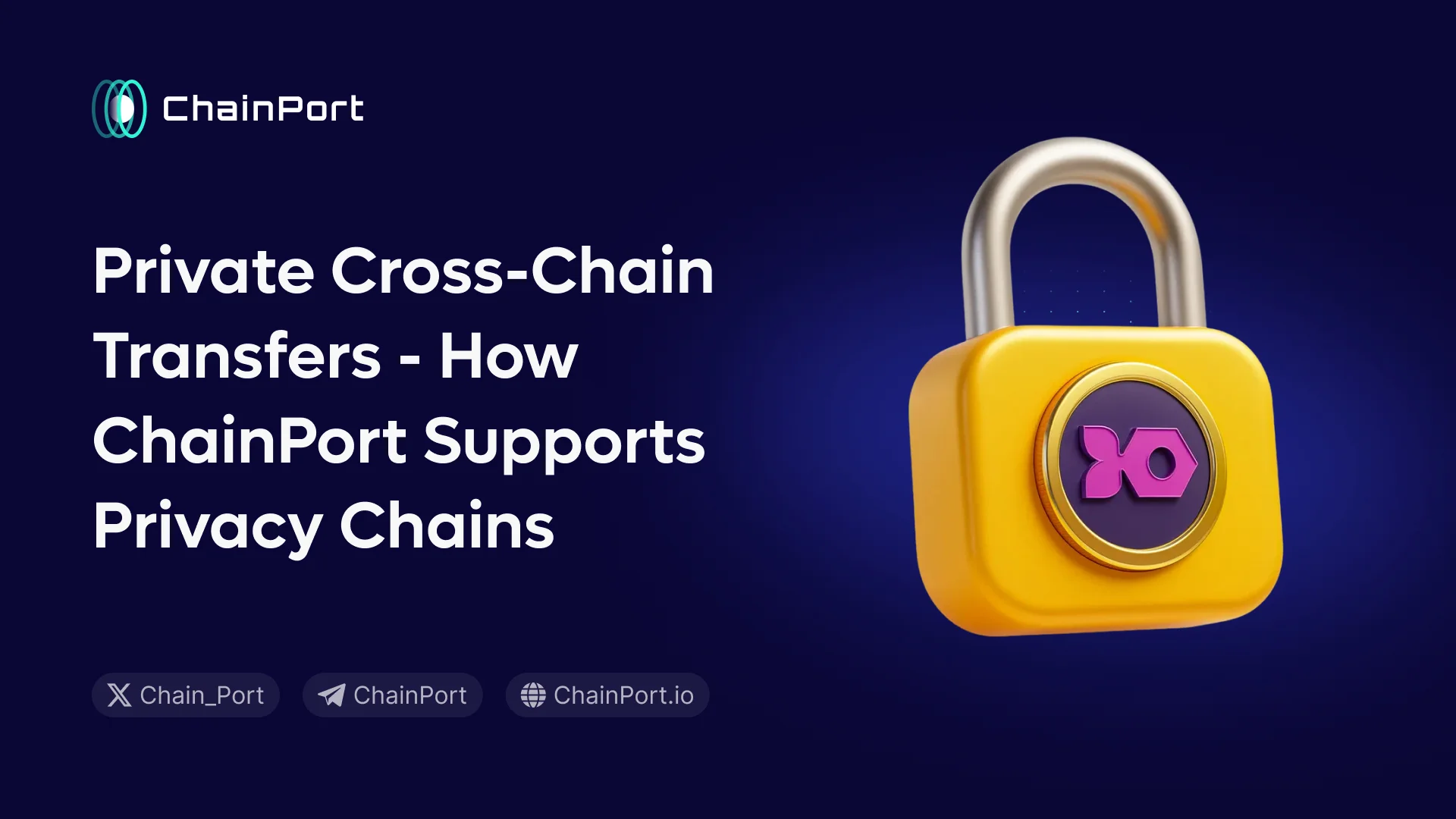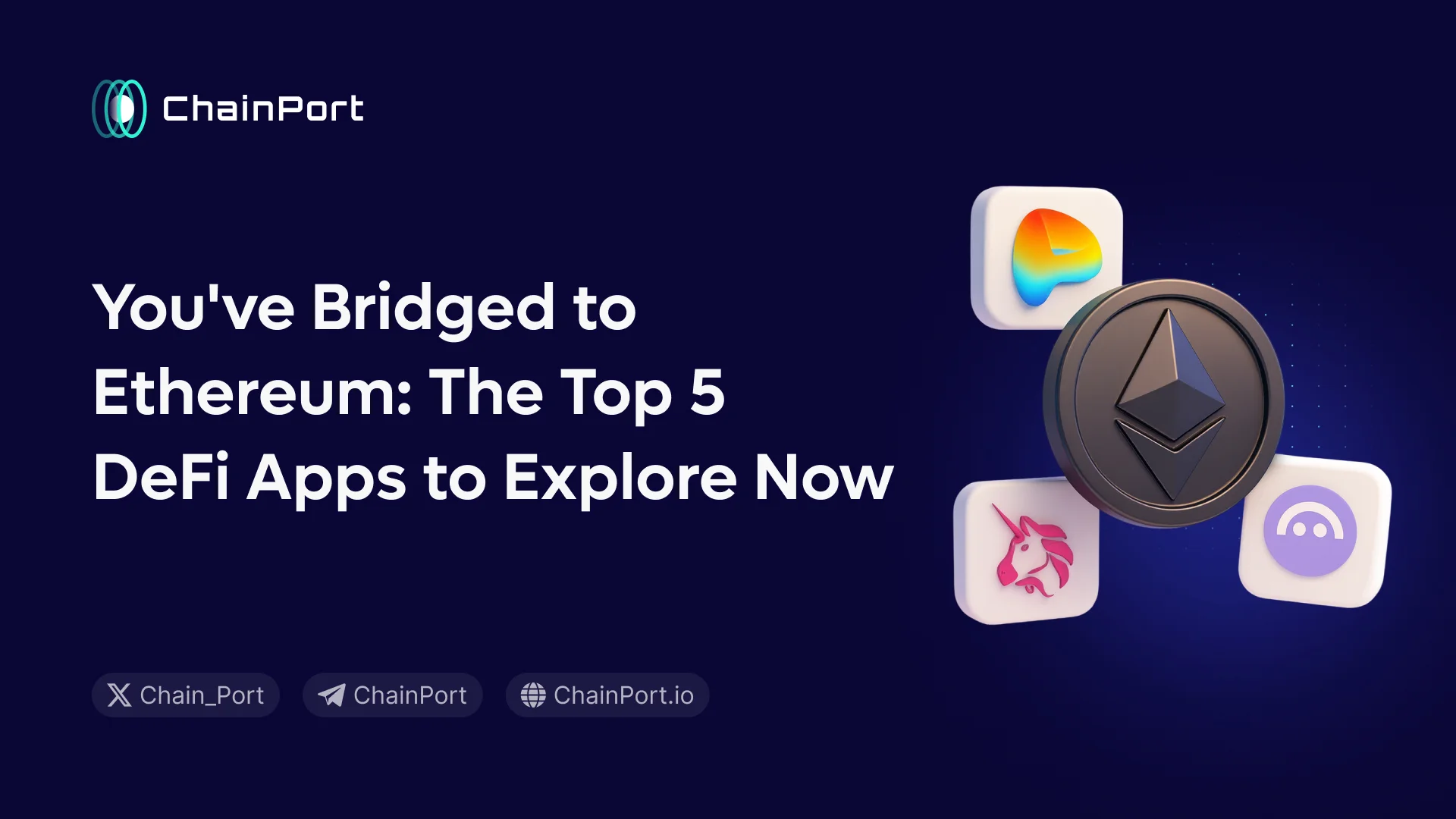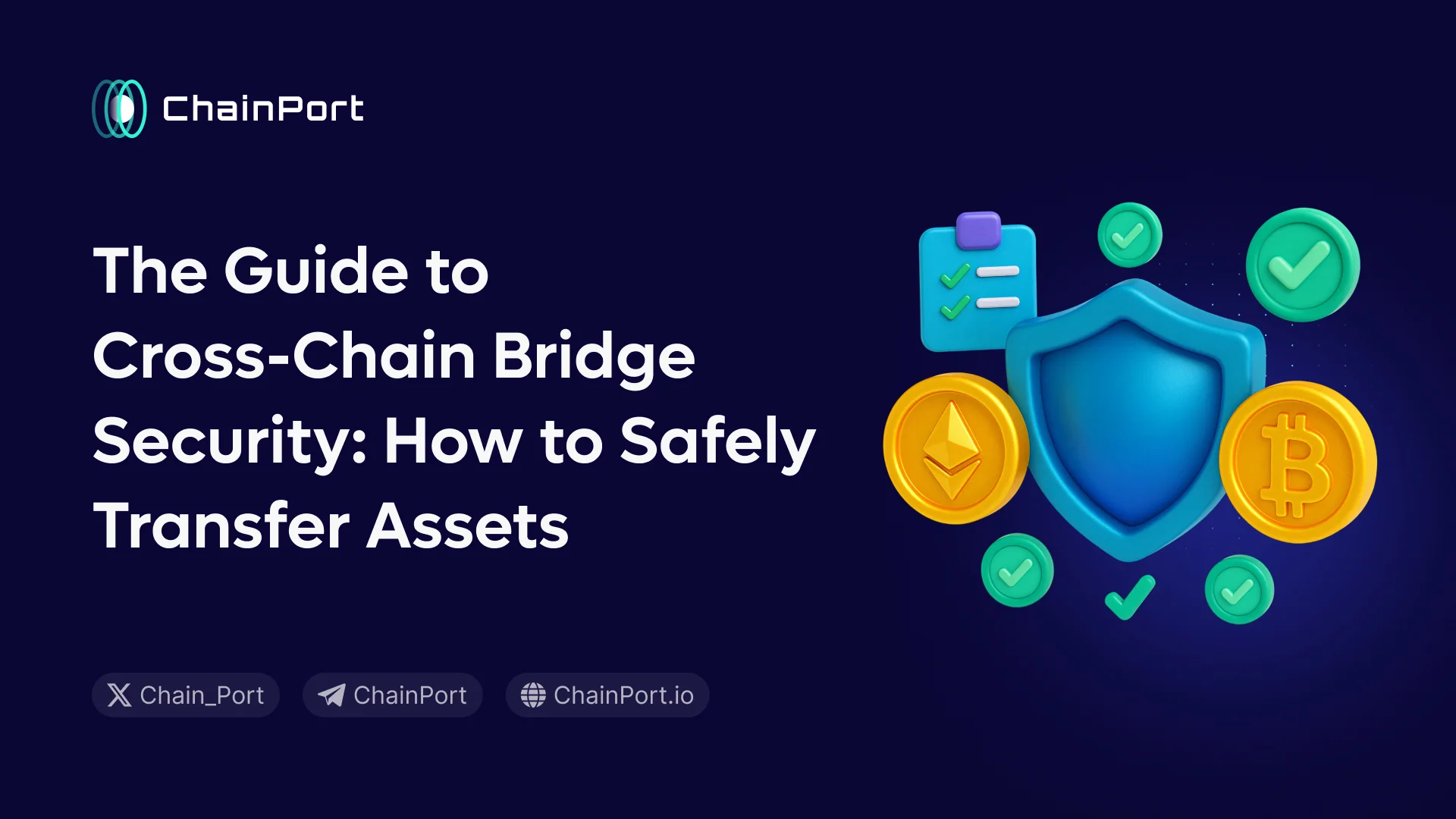Bridging USDT from Polygon to Ethereum has never been easier with ChainPort's integration with Li.Fi. The process is secure, quick, and intuitive, allowing users to transfer their assets seamlessly between the two networks. With bridging fees of just $2 in addition to Li.Fi's fee (which can vary) and gas fees it's an affordable and hassle-free way to move your USDT.
How to Bridge USDT from Polygon to Ethereum in 3 Steps
Step 1 - Connect Your Wallet
Head over to the ChainPort app (https://app.chainport.io/) and connect your wallet. Wallets such as Ledger, Trezor, Coinbase Wallet, Wallet Connect, and Metamask are supported by ChainPort.

Step 2 - Select the Chains & Token
Select the source chain and target blockchain from the menu. In our case, the source chain is Polygon, and the target chain is Ethereum. Next, select USDT as the token you’d like to bridge from the dropdown menu.

Step 3 - Confirm Tx & Get Tokens
Before confirming the transaction, please review all the related information. Details include the source and target blockchain, gas fees, and the specific number of USDT tokens. Once all details are confirmed, please approve the transaction and wait a few minutes.

About Polygon (MATIC)
Polygon is a side-chain scaling solution for the Ethereum blockchain that aims to provide faster and cheaper transactions.
Formerly known as Matic Network, Polygon is a sidechain that operates alongside the Ethereum network, allowing users to transfer assets between the two networks seamlessly. Polygon uses a modified version of the Plasma framework and Proof of Stake consensus mechanism to achieve high throughput and low transaction fees. Additionally, Polygon provides developers with a suite of tools and infrastructure to build and deploy Dapps on the network, including its own Ethereum-compatible blockchain.
Since its launch in 2019, Polygon has gained significant traction in the Ethereum community, attracting numerous Dapps and users to its network.
About Ethereum
Ethereum is a decentralized, open-source blockchain platform that enables developers to build dApps on top of its infrastructure. It was created in 2015 by Vitalik Buterin, a Russian-Canadian programmer, and has since become one of the most popular blockchain platforms in the cryptocurrency industry.
Ethereum is the first and leading platform for building DeFi applications, such as DEXs, lending platforms, and other financial products and services. Its flexibility and programmability make it an ideal platform for developers to create new and innovative DeFi applications.
Moreover, Ethereum has a strong community of developers and supporters who are constantly working on improving the platform and expanding its use cases.
What is USDT?
USDT, or Tether, is a stablecoin that is pegged to the US dollar. It was launched in 2014 by Tether Limited, a company closely affiliated with the cryptocurrency exchange Bitfinex. USDT is designed to maintain a stable value of $1 USD, regardless of market fluctuations in the cryptocurrency industry.
Unlike other cryptocurrencies that can experience significant price volatility, USDT's value is supposedly backed by a reserve of US dollars held in a bank account. For every USDT that is issued, an equivalent amount of US dollars should be held in reserve. USDT can be used as a stable store of value and as a medium of exchange.
USDT is built on top of the Bitcoin blockchain using the Omni Layer protocol, but it has since been expanded to other blockchain networks, including Ethereum and Tron. This has made USDT more accessible to users and has increased its use cases in the cryptocurrency industry.
USDT has become a popular cryptocurrency among traders and investors who seek to hedge against market volatility or who want to move funds between different cryptocurrency exchanges. It is also commonly used by cryptocurrency enthusiasts who want to hold a stable store of value in their portfolios without the risk of price fluctuations.
The Pros & Cons of Using a Cross-Chain Bridge
Cross-chain bridges are a technology that allows users to transfer cryptocurrencies or tokens between different blockchain networks. While cross-chain bridges offer a number of benefits, there are also some drawbacks to consider.
One of the main advantages of using cross-chain bridges is increased liquidity. By allowing users to move cryptocurrencies and tokens between different blockchain networks, cross-chain bridges can increase liquidity and trading volume for these assets. Additionally, cross-chain bridges can provide access to more markets and DeFi platforms that are not available on a user's native blockchain network. This can help increase diversification and reduce risk.
However, cross-chain bridges can also introduce security risks as they require the transfer of assets between different blockchain networks. This can create opportunities for hackers and bad actors to exploit vulnerabilities in the system.
Additionally, cross-chain bridges can be complex to use and require technical expertise, which can be a barrier to entry for some users. Some cross-chain bridges also rely on centralized intermediaries to facilitate the transfer of assets, which can go against the decentralized nature of the cryptocurrency industry. Lastly, cross-chain bridges often require users to pay transaction fees, which can be expensive and eat into the value of the assets being transferred.
Conclusion
In conclusion, ChainPort is a reliable and efficient solution for transferring USDT between different blockchain networks. Its security, ease of use, speed, and affordability make it an ideal choice for anyone who wants to take advantage of the benefits of cross-chain bridging.






